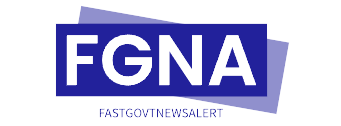
The $1000 direct payments in 2025 have sparked widespread interest and excitement across the country. Whether you’re a working professional, a parent, or someone managing household finances, these payments could provide much-needed financial relief. But how do you know if you qualify?
Eligible for the $1000 Direct Payments
| Category | Details |
|---|---|
| Payment Amount | Up to $1,000 per eligible individual; additional $500 per child under 17. |
| Income Thresholds | Individuals: $75,000/year; Joint Filers: $150,000/year; Heads of Household: $112,500/year. |
| Eligibility Requirements | Must meet income limits, file taxes (if required), and comply with program-specific rules. |
| Programs Offering Payments | Stimulus checks, state aid programs, Social Security bonuses, and more. |
| Application Deadlines | Varies by program; check official websites for updates. |
| Official Resources | IRS Economic Impact Payments |
The $1000 direct payments in 2025 represent a significant opportunity for many Americans to improve their financial well-being. By understanding the eligibility criteria, gathering necessary documents, and applying promptly, you can secure these life-changing funds. Remember to use the money wisely and stay informed about future updates.
What Are the $1000 Direct Payments?
The $1000 direct payments are part of various government initiatives aimed at supporting individuals and families financially. These payments may come in the form of stimulus checks, state-funded aid programs, or even bonuses for Social Security recipients. Think of them as a helping hand during challenging economic times.
For example, imagine your monthly expenses piling up—rent, groceries, utility bills—and suddenly you receive an extra $1,000 to ease the burden. That’s exactly what these payments aim to achieve: giving people breathing room to manage their finances better.
Who Is Eligible for the $1000 Payments?
Eligibility depends on several factors, including income levels, filing status, and participation in specific programs. Let’s break it down step-by-step:
1. Income Limits
One of the primary criteria is your annual income:
- Individuals: If your adjusted gross income (AGI) is $75,000 or less, you’re likely eligible.
- Married Couples Filing Jointly: The cap increases to $150,000.
- Heads of Household: The threshold is $112,500.
If your income exceeds these limits, the payment amount decreases gradually until it phases out completely.
Pro Tip: Use the IRS’s free tools to calculate your AGI and determine your eligibility. Visit IRS Free File for assistance.
2. Tax Filing Requirements
Most programs require you to have filed taxes for the previous year. This ensures that the government has accurate information about your income and household size.
- Non-Filers: If you didn’t file taxes because your income was too low, some programs allow you to submit alternative documentation. For instance, Connecticut’s Premium Pay Program provides resources for non-filers.
3. Specific Programs
Different states and federal agencies offer unique programs tailored to certain groups:
- Breathe Initiative: Designed for former foster youth aged 18–26. Selected participants receive $1,000 annually for two years.
- Undocumented Immigrants in Washington State: Adults who meet residency requirements can apply for aid checks regardless of immigration status.
- Social Security Recipients: Some beneficiaries will see increased benefits starting in April 2025, potentially exceeding $1,000 per month.
Each program has its own set of rules, so it’s essential to research which ones apply to you.
How Do I Apply for the $1000 Payments?
Applying for these payments isn’t always straightforward, but following these steps can simplify the process:
Step 1: Check Your Eligibility
Start by reviewing the income thresholds and other requirements mentioned earlier. Make sure you fit into one of the qualifying categories.
Step 2: Gather Necessary Documents
Depending on the program, you might need:
- Proof of income (e.g., W-2 forms, pay stubs).
- Proof of residency (e.g., utility bills, lease agreements).
- Identification documents (e.g., driver’s license, passport).
Step 3: Submit Your Application
Visit the official website of the relevant program to complete the application. Be mindful of deadlines, as missing them could disqualify you.
Step 4: Track Your Status
After submitting your application, monitor its progress through the program’s portal. You’ll typically receive confirmation via email or mail once your payment is approved.
Practical Advice: Maximizing Your Benefits
Here are some tips to make the most of the $1000 payments:
Budget Wisely
Instead of spending the money impulsively, consider using it to build savings, pay off debt, or cover essential expenses. For example:
- Emergency Fund: Set aside a portion for unexpected costs like car repairs or medical bills.
- Debt Repayment: Use the funds to reduce high-interest credit card balances.
Stay Informed
Government programs often change, so staying updated is crucial. Subscribe to newsletters from trusted sources like the IRS or your state’s treasury department.
Seek Professional Help
If you’re unsure about your eligibility or need help filing taxes, consult a certified accountant or visit a local community center offering free financial counseling.
Read Also: What You Need to Know About the Latest SSDI Payout Increase in 2025
Eligible for the $1000 Direct Payments FAQs
Q1: Will everyone get $1,000?
No, not everyone qualifies. Eligibility depends on factors like income, tax filings, and participation in specific programs.
Q2: Can I still apply if I missed the deadline?
Deadlines vary by program. Some may offer extensions, but it’s best to act quickly. Contact the program administrator for clarification.
Q3: How will I receive my payment?
Payments are usually sent via direct deposit or mailed check. Ensure your banking information is up-to-date with the IRS or relevant agency.
Q4: Are these payments taxable?
Generally, stimulus checks and similar payments are not considered taxable income. However, bonuses tied to employment (like Connecticut’s Premium Pay Program) might be subject to taxes.
